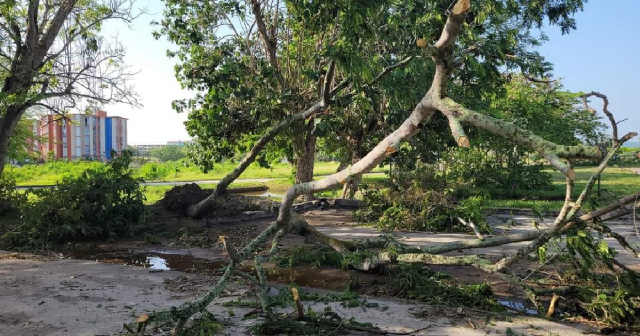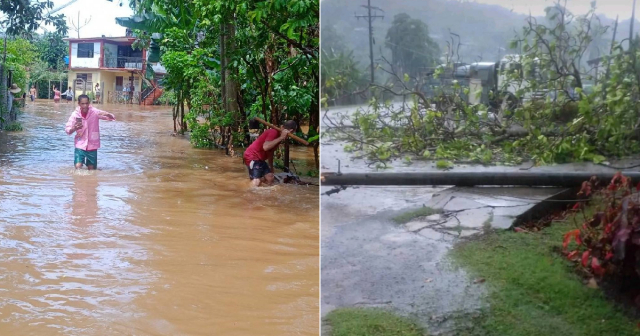
Authorities urged residents in the municipalities of Guantánamo and Manuel Tames, in the easternmost province of Cuba, to take extreme precautions due to the imminent opening of the spillways of the Faustino Pérez reservoir to prevent it from collapsing, as, due to the intense rains of the last few days, it is about to reach its maximum capacity.
The Hydraulic Resources Department in Guantánamo warned this Wednesday that, due to the constant rainfall in recent days, which have averaged over 100 mm, the dam has accumulated 24 million cubic meters of water in its reservoir -92% of its capacity- and in three days will reach its maximum volume of 26 million m³.
The alert, published by the local newspaper Venceremos, warns residents of areas near the La Clotilde dam - which is currently receiving 3 million cubic meters - and the towns of Arroyo Hondo, Cecilia, and Paraguay because "to prevent the collapse of the Faustino dam, the rivers passing through those communities will be used to relieve it".
As a preventive measure, the population should not be around those waterways to avoid human losses, warns the publication, while urging to take all necessary actions to reduce material losses.
According to the Water Resources Directorate, before the reservoir is filled, "all measures are taken to prevent it from reaching its maximum capacity," while "alertness and constant monitoring of the entire hydrometeorological situation are maintained."
The state entity asks "the population residing in the municipalities of Guantánamo and Manuel Tames to pay attention to the information about this situation."
The Faustino Pérez dam, popularly known as La Esperanza, was inaugurated in 2000 and supplies water to more than 65% of the city of Guantánamo, as well as being the main regulator of the Guaso River floods. It has a gate spillway to gradually drain its contents and prevent flooding.
This Tuesday, five stations of the National Institute of Hydraulic Resources (INRH) network reported accumulated rainfall exceeding 100 mm.
The list was topped by the Tele-correo Palenque station, in the municipality of Yateras, in Guantánamo, with 123 mm recorded, according to the information published on Facebook by Hugo E. Ramos López, principal specialist of the Hydrology and Hydrogeology Directorate of the INRH.
The rains of the current season represent a relief to the persistent and prolonged drought that has plagued the country.
The largest reservoir in Cuba, the Zaza in Sancti Spiritus, had accumulated only 15 percent of its total volume (more than one billion cubic meters) by the end of last April, due to the scarcity of rainfall during the dry season of the year, which precisely ends in that month.
In May 2023, the reservoirs in the province of Guantánamo reached 20% of their total filling capacity, the lowest amount of stored water in a decade.
What do you think?
COMMENTFiled under:






